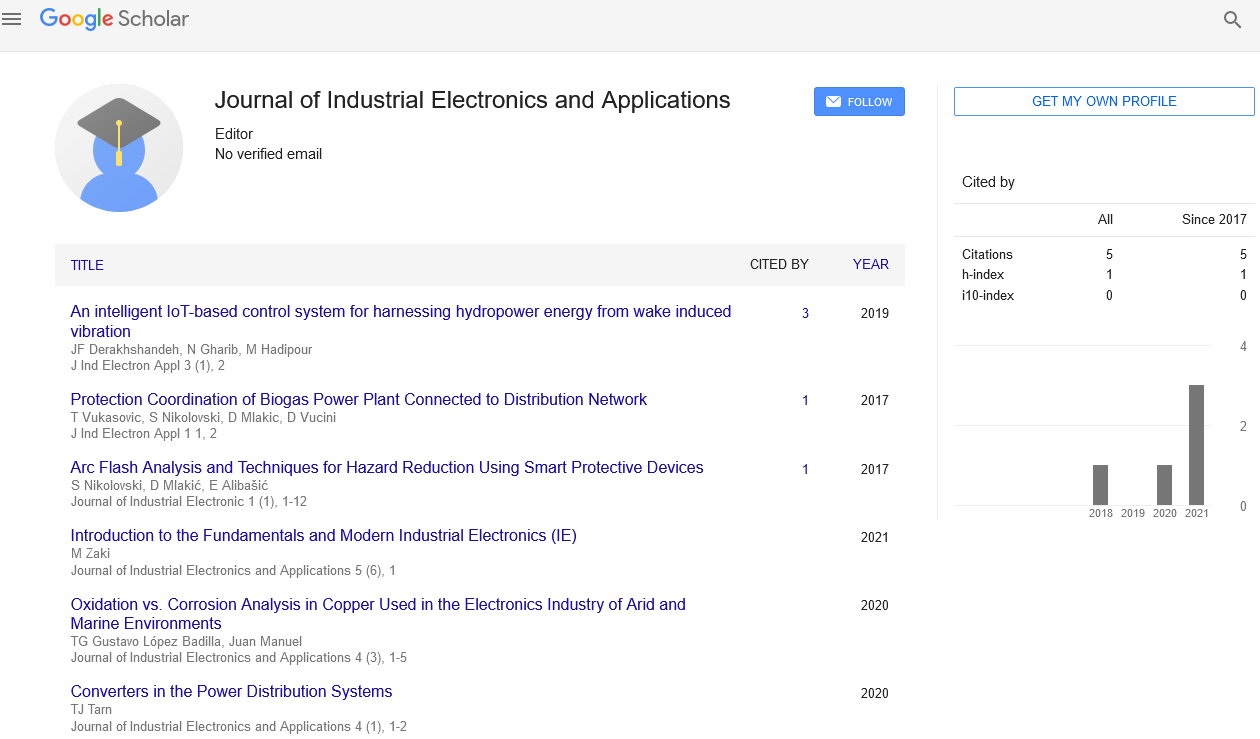Opinion Article, J Ind Electron Appl Vol: 7 Issue: 1
Mechatronics and Robotics: Bridging the Gap between Mechanics, Electronics, and Computing
Shuhui Lupan*
1Department of Electrical and Electronic Engineering, Polytechnic University of Bari, Italy
*Corresponding Author: Shuhui Lupan
Department of Electrical and Electronic
Engineering Polytechnic University of Bari, Italy
E-mail: lupanie@hotmail.com
Received date: 24 February, 2023, Manuscript No. JIEA-23-95905;
Editor assigned date: 28 February, 2023, PreQC No. JIEA-23-95905(PQ);
Reviewed date: 13 March, 2023, QCNo JIEA-23-95905;
Revised date: 21 March, 2023, Manuscript No. JIEA-23-95905 (R);
Published date: 30 March, 2023, DOI: 10.4172/JIEA.1000018.
Citation: Lupan S (2023) Mechatronics and Robotics: Bridging the Gap between Mechanics, Electronics, and Computingn. J Ind Electron Appl 7:1.
Description
Mechatronics is a multidisciplinary field that involves the integration of mechanical, electrical, and computing systems to produce intelligent machines that can interact with the environment. Robotics is a subfield of mechatronics that focuses on the design, construction, and operation of robots. This manuscript discusses the fundamentals of mechatronics and robotics, their applications, and their impact on society. We will also explore the challenges and future prospects of this exciting field.
Mechatronics is a relatively new field that has emerged from the integration of mechanical, electrical, and computing systems. It is a multidisciplinary field that combines knowledge from various domains such as mechanics, electronics, computer science, and control theory. Mechatronics is used in many applications, such as automotive systems, aerospace, medical devices, and consumer products. Robotics is a subfield of mechatronics that focuses on the design, construction, and operation of robots. Robots are intelligent machines that can perform a variety of tasks, from manufacturing to exploration and surveillance. Robotics is a rapidly growing field with significant potential for future development.
Fundamentals of mechatronics and robotics
Mechatronics and robotics share common principles and components. Mechatronic systems typically include mechanical components such as motors, actuators, and sensors, electronic components such as microcontrollers, amplifiers, and power supplies, and computing components such as software, algorithms, and data processing. Robotics systems typically have similar components but with additional sensors and actuators to enable the robot to interact with its environment. The robot's behavior is usually controlled by a combination of software and feedback control systems.
Applications: Mechatronics and robotics have a wide range of applications in different fields. In the automotive industry, mechatronics is used to control the engine, transmission, and braking systems. Robotics is used for tasks such as welding, painting, and assembly in manufacturing processes. In the aerospace industry, mechatronics is used in the design and control of aircraft systems such as landing gear, control surfaces, and engines. Robotics is used in space exploration, where robots are used to explore planets and moons.
In the medical field, mechatronics is used in medical devices such as pacemakers, prosthetic limbs, and surgical robots. Robotics is used in minimally invasive surgery, where robots are used to perform complex procedures with high precision and accuracy. In the entertainment industry, mechatronics is used in animatronics, where robots are used to impliment lifelike characters for movies and theme parks.
Impact of mechatronics and robotics on society: Mechatronics and robotics have a significant impact on society. They have improved the efficiency and quality of manufacturing processes, resulting in lower costs and higher productivity. In the medical field, mechatronics has improved patient outcomes by enabling more precise and less invasive surgical procedures. Robotics has also contributed to the exploration of space, allowing us to gather data and images from planets and moons that are otherwise inaccessible.
Despite the numerous benefits of mechatronics and robotics, there are also concerns about their impact on society. One concern is the displacement of human workers by robots, particularly in manufacturing and other industries where repetitive tasks are performed. Another concern is the potential misuse of robots for military or surveillance purposes.
Challenges and future prospects: Mechatronics and robotics face several challenges, such as the integration of various components, the design of efficient control systems, and the development of robust and reliable hardware and software. Another challenge is the ethical and social implications of mechatronics and robotics.
 Spanish
Spanish  Chinese
Chinese  Russian
Russian  German
German  French
French  Japanese
Japanese  Portuguese
Portuguese  Hindi
Hindi 